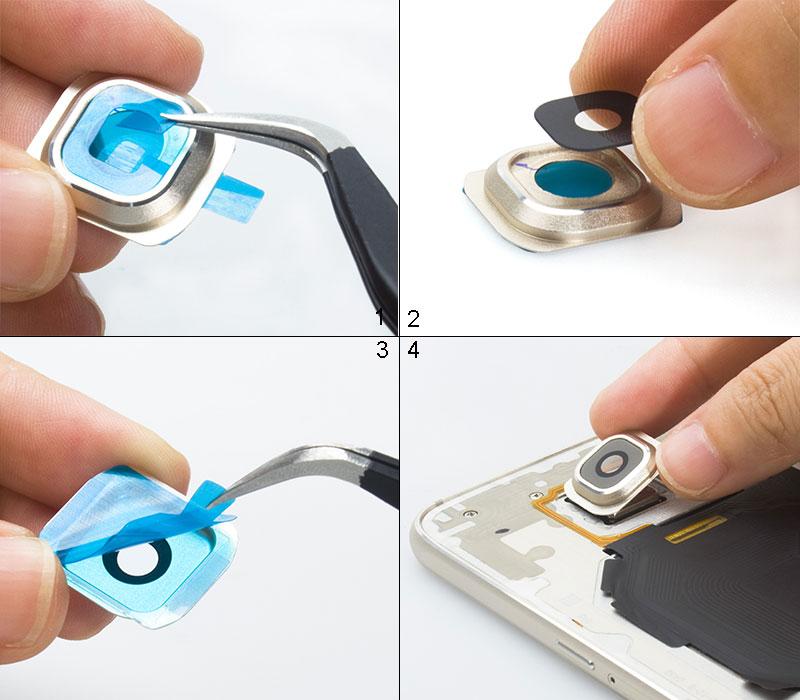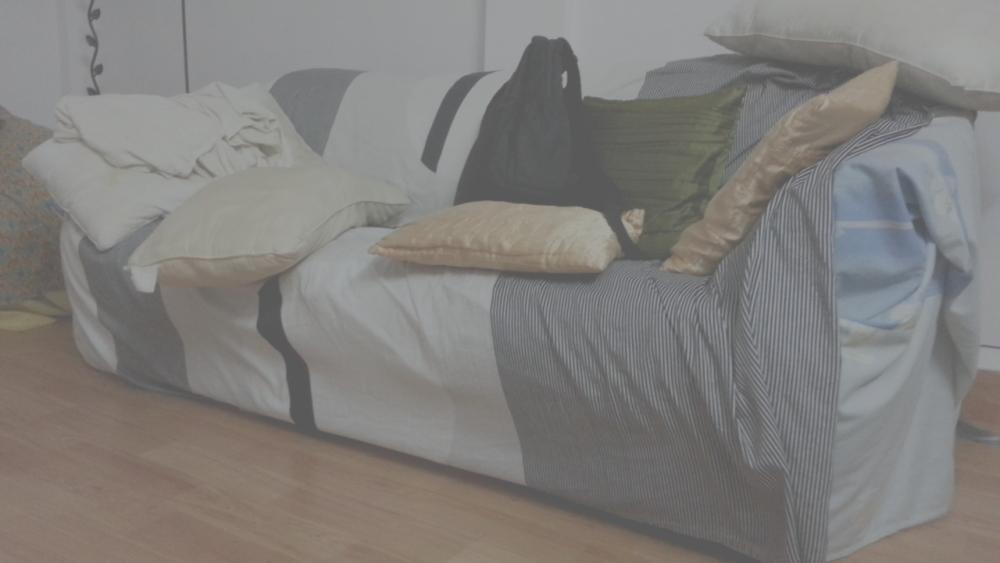-
Posts
2,539 -
Joined
-
Last visited
Content Type
Profiles
Forums
Articles
Everything posted by sanveer
-
Thanks Andrew. I may have overreacted a little but it was strangely scary. I am glad the spamming has been fixed. No more trolls.
-
You're welcome. I am looking forward to the year's Best and Worst episode. And, please another behind the scenes/ bloopers. Those are also necessary. :-)
-
Jordan (and Chris) you guys are Insanely Talented. I find most of the reviewers terribly boring, and I miss the Fast forward control on YouTube videos, during most other gadget reviews. But you guys seriously nail it. I think I have watched the Best and Worst Gear of 2014 and the Blooper Reel many many times over. I don't know what else to say except Thank You for the entertainment and the completely watchable reviews.
-
Maybe I need a psychotherapist too, but the whole thing was scary. Luckily I don't use my Facebook ID to sign-in. That would make it worse. I feel this whole spam thing has to be handled better.
-
Andrew, the spam on the site ia back and keeps rearing its ugly head. I am guessing it is more than a random spammer. It is someone u may know. Also, maybe you should appoint more admins or also file some kind of complaint against the spammer. Maybe the cyber cobs need to get busy.
-
Thanks Calum. I picked up a few JK MIC-J 044s. It's an excellent mic for the price. I will use it indoors I guess.
-
Thanks. Good idea. Will check that first. Maybe the sound can be tweaked or cleaned up a little in post too.
-
What do you think will be the best Reporter Mic for doing episodes on Mobile Phones? The phone (s) will be Android Phones. I like the Audio Technica AT9913iS (like the Rode VideoMic Me) but it does not have a long cable. I though of the new Rode Mic i-XLR, but that is only for iPhones. Any suggestions?
-
Nokkor/ Gabor, Do you think the 4k Cinema App could be used on the Nexus 6p and the Moto X Pure devices? I wanna pick up some phones fpr actual film production. And these have some extra featues I want and like. Thanks in advance.
-
I would like to hear both sides of the story too. My limited interactions with B&H have made me feel they are a league apart from anyone else. But that's obviously a customer's perspective.
-
Hahaha. Actually, I am listening to everyone. TBO, except for Mattias, I am not sure the other have understood. See, many a car's CC Displacement if not the only thing pushing it faster. Apart from turbochargers, the nature of the engine and many other things govern how fast a car makes it to 100 kmph. Similarly, the amount of detail that a camera will hold, is governed by the size sensor, yes. But, that is not the sole deciding factor. Also, the look and quality of a sensor and lens are 2 completely different things. Shallow DoF is more of a look thing, and has little to do with quality. I am not suggesting companies are crippling them on purpose. Either they are unaware of the same, or there aren't enough companies supplying faster lenses, or the lens division on smartphone companies are not in the same league as the lens division, on, say, companies that make cameras like the RX10 series or the Panasonic FZ1000 or many others like that. Also, this problem is not endemic to Apple, or Samsung or whoever else. It is there across the board in all mobile phone camera lens makers. The main reason may be due to the fact that like sensor suppliers like Sony, lens suppliers are also limited, and people just pick stuff off the rack, without actually giving exact design specifications to lens manufacturers. This is why when one has a damaged lens, one can pick up the extremely poor quality lens from eBay or somewhere else, and replace it themselves at home (obviously outlining the extremely poor level of craftsmanship). Also, lens design, right now, on interchangeable lens cameras (and point and shoot too) revolves around a design where the lens just about covers the four corners of the sensor, by circumference. This has been a constant for the longest. And, in cameras with smaller senses, when one adapts larger lenses, only a smaller portion of the lens is used, and thus, it doesn't really add much to the detail in the image. Now, if mobile phone cameras had lenses whose circumference was much wider than the sensor, and had another lens in between to aid the image to be spread uniformly on the sensor (like the Metabones Speedboosters), that would actually add more surface area to the sensor, in terms of light. And, faster lenses, stopped down, during the day. They would, thus address 2 of the biggest issues that plague mobile phone sensors (and thus cameras). I will try and change the lens on a mid-range mobile phone and then check the results. I am actually afraid of screwing up an expensive phone, since I have already lost a few phones to hardware issues in the last year or two. I have a few great Nikkor Lenses laying around from a camera that stopped working due to bleeding batteries (and subsequent bad service). Will test them with my experiment and then post the results.
-
Considering that companies like Apple have billboards all over saying that the pic on that particular billboard has been taken with an Apple iPhone, I believe it is only fair to have better quality photos. While I agree that mobile phones right now produce very mediocre quality photos, especially in bad lighting or in high contrast situations, I do not agree that they should not get better. As a matter of fact, IMHO they can vastly improve by making tweaks to their bitrate (a few times the bitrate), and getting much better optics. See it like this, a lot of mobile phone companies are selling their phones by paying hundreds of thousands, maybe even millions of US$ to professional cameramen to pretend that they can shoot movies and ADs on their mobile phones. While it's great that they are doing it, why don't they actually improve what can be improved. If mobile phone cameras like the Honor 6 Plus can have an f.95 lens, I am sure it should not be an issue for others to follow suit. Also, considering how tiny mobile phone cameras are, having built-in NDs on mobile phone cameras would be many many times cheaper than those on camcorders or DSLRs (DSLMs). Also increasing bitrates or colour depth cannot be such a big issue, considering that they already have the hardware in place (sensor and processor). It would only be a matter of implementation. If they have issues regarding money, they can go the GH4 way and charge for the same (a lot of camera apps are paid anyways).
-
Hmmm ... that's very disappointing. Imagine it like this. If the size of the sensor is 1/27th, the size of the lenses would be proportionate (or hover somewhere around that range). This could be a reason, why so much detail is being completely thrown away.
-
Aaaaaaah, ok. What about bringing detail to dark areas? And, how much larger were the file sizes, to the original jpegs in the camera? Would you have comparison pics, especially ones that have scenes with noticeable contrast? That would be interesting.
-
I have always wondered what is preventing mobile phone cameras from taking better image, and how long before the quality gap between them and high end point and shoot, or mid range DSLRs, is reduced greatly? Apart from the inherent physical limitations of the size of the sensor, and thus the size of individual pixels, mobile phone cameras have many more problems, most of which they have manufacturers to blamed for. 1. I find the DXO labs tests titled Perceptual MPix rather interesting, where they attempted to highlight how most lenses resolved lesser details than the sensors they were mounted on, and for many reasons connected with characteristics of lenses. They came to the conclusion that 45% of megapixels are lost due to lens or sensor defects, and that when the camera sensor is no longer the limiting factor in the combination, you see the quality benefit only with the better lens. My take on this is, that since some of the best Full Frame lenses resolve lesser detail than the sensors they are made for, it is extremely likely that mobile phone lenses, that are made for sensors that have 1/27th and smaller sized sensors, as compared to full frame sensors, will for obvious reasons (of optics) be resolving far lesser detail, and that resolution loss, apart from reasons attributed to the sensor size, will also be enormous (solely due to the lens' limitations). Also, IMHO this cannot be controlled or improved by merely using a regular lens adaptor, of a larger lens, but arguably changing the entire lens design, to make the lens much wider at its widest. 2. A 21 Mp from a smartphone camera, and one from a DSLR or even a point and shoot will hold very different file sizes, and that is one of the reasons for macro blocking and other strange kinds of noise in photos (as well as for video), which makes pics lose detail, and thus look far inferior to DSLRs and point and shoot cameras. Mobile phone cameras should have much larger file sizes, to begin with, not saving on space, now that Micro SD cards have become much cheaper and much faster now. We did notice how pushing the Video Bitrate on Android video to 200mbps made the video so much better in terms of detail and noise. 3. Considering the size of the individual pixels, I think it's only bad habit that makes camera phone manufacturers make lenses that are so slow. Even f2.0 is far from sufficient for taking pictures or video for mobile phone cameras, in anything but bright sunlight. IMHO all mobile phone cameras should have f1.0 lenses (or even faster lenses), and should be stopped down by variable NDs, during the day, instead of having slower lenses that use slower shutter speeds for gathering more light, especially considering how quickly and how drastically light drop makes photos come apart on mobile phone cameras. 4. RAW is an option now, with various Apps, but I wonder how food or bad the compression is, and how it compares to RAW on DSLRs. What do you guys think?
-
Check the literature. The specs are most likelh understated. I don't believe the processor is causing those limitations. Also, this sensor is made for mobile phones as well as small sensor camcorders, so I am guessing its capability is a lot more. Downoad the 1st file. Also, check the 240 fps Hummingbird video (especially for its quality and sharpness). http://www.sony.net/Products/SC-HP/IS/sensor2/products/imx377.html http://m.youtube.com/watch?v=U9V3ZnRnq9U
-
I also chose Dark + Light. But the Intensity level has to be High. I noticed that the profile looks noticeably more Flat. Also, the Noise Reduction cannot be switched off, since then, it actually starts Creating fixed pattern noise. I hope it works on the Excellent Nexus 6p phone. That one's sensor is an engineering masterpiece. I was blown away by the 240fps video. The camera can actually do 300fps, and the 720p looks IMHO as sharp as the one from the Sony cameras (RX10 ii and RX100 iv). Also, it can do RAW 35fps at 12.35MP, apart from 4k at 60p. Pushing the bitrate in that one comparable to the GH4 would seriously be something. Maybe, as I predicted, mobile phone sensors will finally start competing with mhch larger sensors (beginning with, for video). This one was shot on the Cameringo app on a Note 2 or 3. And it was shot in terribly low indoor light. And the picture looksa lot more like Vlog.
-
Dear Developer, I tried the app on the Samsung S6 Edge, and while the video quality is excellent and comparable with DSLRs that shoot Full HD (Maybe even 4k), the profile could be More FLAT. Like the one on the Cameringo App, when the Contrast is pushed Completely Down. Thanks in advance ... ;-)
-
Very good question. On the better camera in phones argument, I have always wondered why they don't have faster lenses (f1.4?) on mobile phones, along with built-in ND filters? The f1.4 zoom idea sounds great. Or they should let users just buy and adapt better lenses on mobile phones, amd sell them separately. Why should we be stuck with fixed f2.0 lenses with tiny sensors. It's terrible. Especially at night. The sensor on the new Nexus 5x and 6p does 12.35 MP 12 Bit at 35 fps, 4k at 60p and 2k at 120fps. I guess the Snapdeagon 810 in the 6p may be able to handle a hack pushing up data rates, to capture more information. But I wonder if it will be able to do RAW at 30 or 35 fps without burning (exploding in the case of the Snapdragon 810).
-
The new Nexus 5X and 6P have just been announced, and will be hitting the markets around October sometime. They obviously have been upgraded in big ways, and what is most impressive, is something that seems completely unannounced (specifically), in the Press Release (the videos and the documents provided). Both these mobiles phones, sport a New Sony Sensor, namely the Sony IMX 377 CQT sensor. What is Very interesting, about the sensor, is this: It does full pixel readout, of its 12.35 MP Sensor, at 12 bit, 35 fps !!! It also does 4k at 10 bit (decent), upto 60p. That's some insane quality, for a sensor on a mobile phone. Unfortunately I am not sure the processor or the codec on that, would be geared to handle something with that bandwidth of data, whether during recording, or otherwise. If someone could hack it, to be able to get 12 bit RAW, from its sensor, at 30 fps, it would be insane. Like an App, on the lines of the 4k Cinema App (that does a reasonably Flat and 200 Mbps video). Since it can do 2k at 120fps and 4k at 60p, I am guessing that Motorola would push for those frame rates by updates, maybe sometime later. This is the Sony literature on the sensor: http://www.sony.net/Products/SC-HP/IS/sensor2/img/products/IMX377CQT_ProductSummary_v1.5_20150414.pdf
-
I didn't sign in when all this crap was happening. I panicked, like someone was going to steal my password. Hehehe. The appoval of new posts is a great idea. Btw: I suspect it is someone we all know. Dunno who precisely, but I just have a gut feeling.
-
The video quality has improved tremendously. I would love to see a face-off between this and the 200Mbps Samsung S6 monster.
-
Dude you disappeared. I am sure everyone would love a face-off between the S6/ S6 Edge/ Note 5 etc and the iPhone 6 Plus with whatever app is best for it. I would put my money on the S6. Btw, how well would this run on the Moto X Pure or Style?
-
hahaha. Zacuto were extremely shocked by all the brickbats from the Companies, the DoPs and the participants, when online users started randomly quoting single sentences and taking random figures frlm their findings. It got to the point that they couldn't take it anymore, and they cancelled any further tests/ shootouts. With Hacked Canon and Nikon, Zacuto wohld be digging a 100 metre grave for themselves, which they might never be able to come out of. Hehehe ;-)
-
I think it's only fair to let Zacuto do another of their famous Shootout Videos, where they compare cameras on almost all technical parameters. They could throw in a few mobile cameras too, especially those with the installed apps for improving bitrate. And, have a few blind audience tests ... Those were fun and controversial ...





